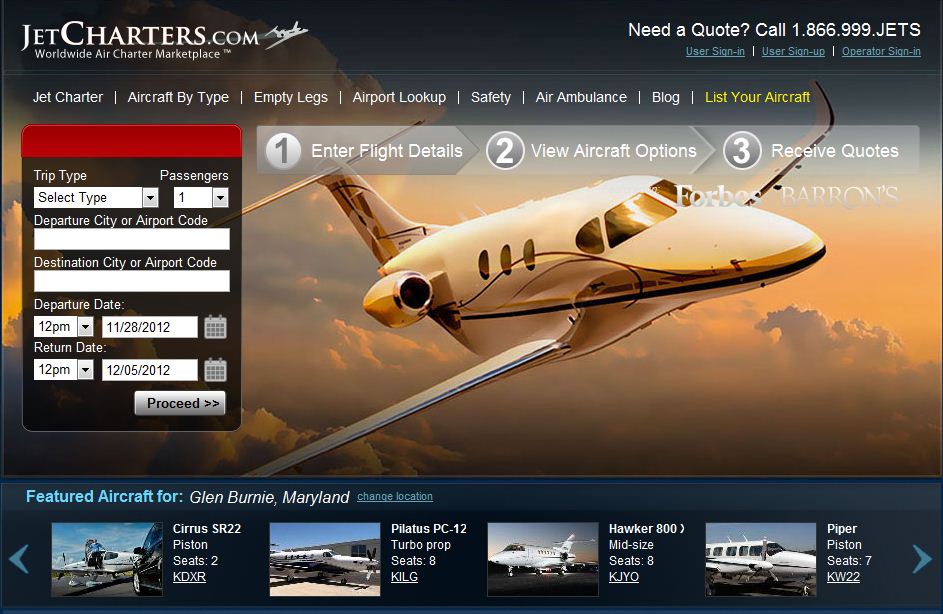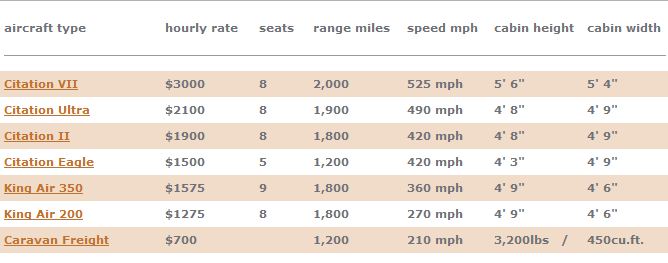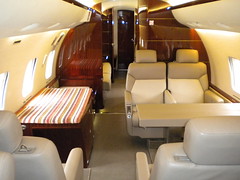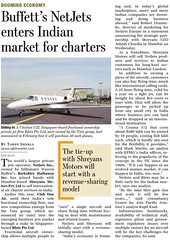Whether you are an Armani-wearing CEO of a company or a khaki-clad clerk building spreadsheets, we all prefer a little bit of comfort when we travel. For some of us tired of traveling via the commercial airlines after enduring the hassles of a long check-in lines and TSA checkpoints, the alternative could be charter jets. Gone are the days when chartered jets are meant for the moneyed class. Today anyone can rent airplanes by the hour and travel quickly and conveniently. Of course, the price of travel is a bit higher compared to the commercial aviation options but none of the conventional air travel services can even come close to what is offered by the charter jets in terms of flexibility, comfort and ease.
Let’s first understand how it works. Airplane charters work very much the same way as car sharing services like ZipCar that allow you to rent cars by the hour via the internet. If you are a big city resident, you may have already seen/used car sharing services like ZipCar that allow you to rent cars by the hour via the internet. All you need is an account with the rental company and you can instantly make reservations over a smartphone/ computer whenever you need to rent a car. Once you finish using the car, you can return them to the nearest station and walk away. Airplane charters work very much the same way. Companies like JetCharters have made it quite easy for today’s wired traveler that he/she can now book chartered flights (sign up for an account when you are on the website) over the phone or via the internet using a smartphone/tablet/computer, very much like booking a car. Travelers arriving at the site are presented a simplified interface that requires trip information such as trip type, number of passengers, departure and destination airports of choice, preferred time and date for departure/arrival.

Travelers don’t have to always book a round trip flight. Based on the needs and affordability, a traveler can book a one way trip or a multi-leg trip stopping over in various airports. The hourly rate is dependent on the aircraft class. Aircraft hourly rates are dependant on aircraft size. There are three common size classes, based on cabin dimensions: light or small jets, mid-size or medium jets, heavy or full-size jets (and not to forget the air ambulances). JetCharters, one of the market leaders in the business, offers a wide selection of aircrafts ranging from small jets like a Beechjet400 (seating for six or seven passengers) to large jets like Gulfstream Legacy 600 and even a full-sized Boeing737 that can accommodate up to 172 passengers. An additional offering available under this service is the air-ambulance which could be very useful for transporting passengers with medical conditions.
So, how much it typically cost to rent an airplane by the hour? According to Chief Executive Air light jets typically cost around $2,500 per flight hour, mid-size jets cost around $3,200 per flight hour and heavy jets cost on average $4,500 per hour and up. In addition to flight charges, the charterer is responsible for all charges incurred during the trip, including over-night charges, landing fees, International fees (if you are traveling outside the country), catering and flight-phone usage. One of the leading companies in the market, Planemasters, has taken out all the hassles and published a simple matrix showing the hourly rates for each type of plane they have on fleet. If you would like to get smart about the details of chartering costs for a typical trip, I recommend that you check this blog.

Source: Planemasters.com
Charter jets workout much cheaper if you are traveling with a group because the cost you are paying for renting a particular aircraft can be divided per passenger. Let’s say if you are planning to fly a large group, say 10, of your friends/family to a wedding in Vegas (or a board meeting in Los Angeles) and the whole thing costs you $20,000. If you work the calculator, you can easily figure out that it costs only $2000 per person, which might be slightly more than what each of you would have paid for a first class ticket. Now, how often can you have the whole plane for just you and your wedding party? And when you have it why not get the fun started before you even arrive at your destination. One of the major and attractive features of charter jets is the ability to arrive at even the hard to reach small towns without having to worry about catching connecting planes and missing baggage.

Often, small towns and communities are not conveniently located near a large airport, but air charters opens up more travel options with smaller airports across the region. Another benefit to choosing an operator through JetCharters is that there are no repositioning fees and travelers only pay for the distance they travel (ImagineAir and Kavoo are just two of the many licensed operators offering travel options through JetCharters.com). Also, air charters can be a great way to travel shorter distances while avoiding busy highways and roadways and it offers an increased amount of flexibility with travel schedules. Planemasters, a Chicago jet charter company that is one of the largest executive charter companies in the entire Midwest, sums it up nicely on its website showing what you get for your $$ – service, flexibility, freedom, and control. You can bet every traveler on this planet would like to the sound of “We’re on Your Schedule.”
In today’s uber-connected world where people even rent out their spare bedrooms by the day (i.e., AirBnB), it doesn’t come as a surprise that some of these individual jet owners are renting out their jets they bought for personal use. Instead of parking it at an airport and using it occasionally to fly to a meeting or a family get together, private aircraft owners can rent out their airplanes via JetCharter by signing up as operators. So, an aircraft owner can make significant chunk of change instead of having it parked in a hanger and collecting dust.

NetJets come to India…. (Photo credit: Mark D. Martin India)
Chartered planes business is fast expanding and is considered one of the hottest sectors for many investors. With a squeezed out commercial aviation network and a congested surface transportation system that is barely meeting the demand, many business travelers are looking at chartered jet travel as a viable alternative, partly because of the flexibility, convenience and swiftness. You know a business is hot when investment guru Warren Buffet swoops in with his war chest and buys private jet operator. Looking at the demand and the potential for massive growth in this global market, Mr. Buffet’s company Berkshire Hathaway bought Net Jets, which sells partial ownership interests in business jets, about a decade ago. More recently NetJets announced plans to spend up to $9.6 billion on as many as 425 new planes, which should be a good indicator for how much demand is there for these jets.
Doesn’t matter how we analyze it, commercial airline services are no match for the convenience of a chartered plane . Imagine arriving at private terminal with our friends after avoiding crowded security lines of commercial airports and boarding the jet that are awaiting your party, eating & drinking whatever you like (i.e., catered food and not that stale over-priced sandwich you are used to). Wouldn’t that be a great way to get things rolling for that wedding in Las Vegas or that weekend in Bahamas?
**This blog post was sponsored by Straight North and JetCharters**




































